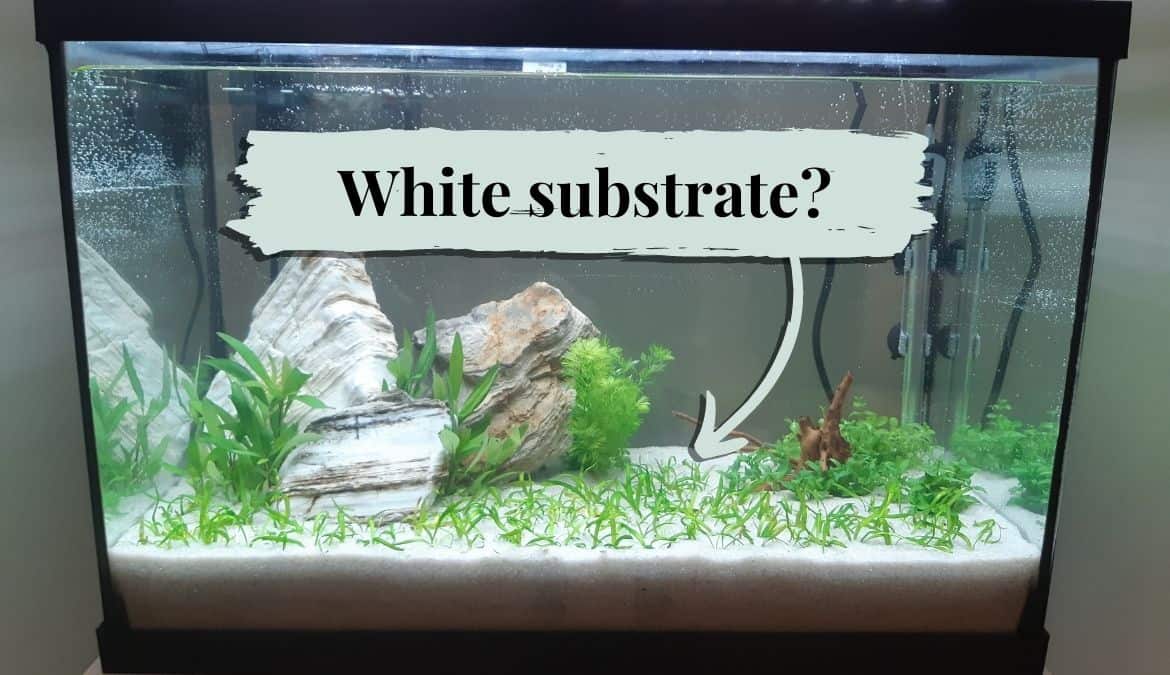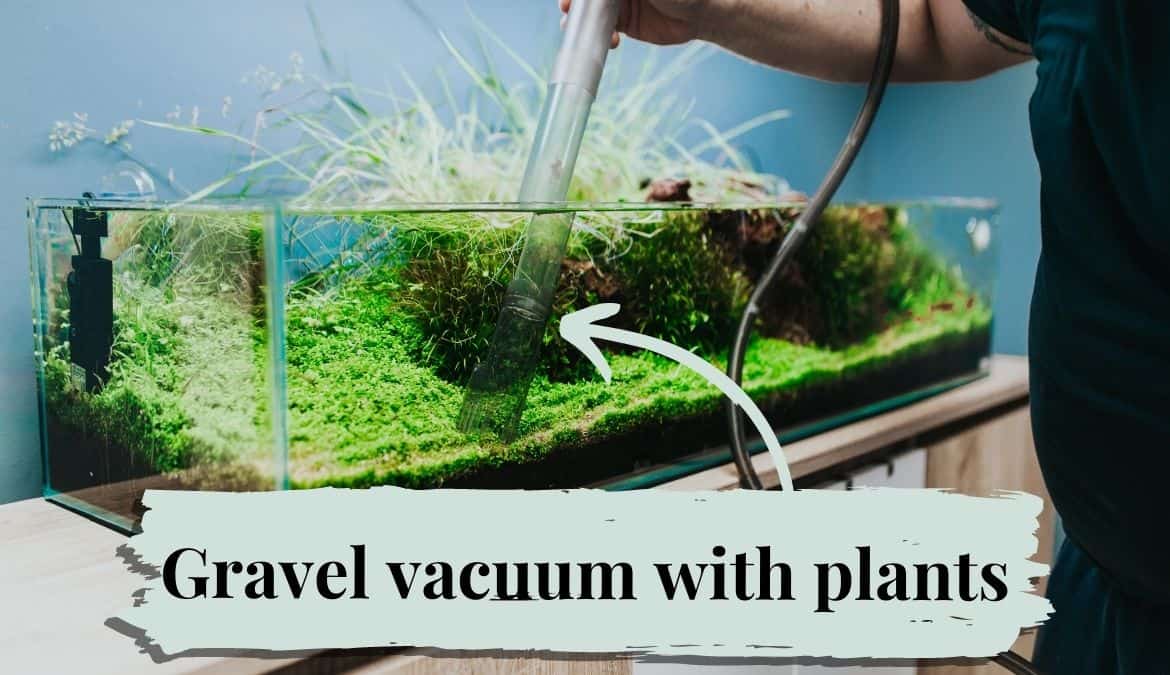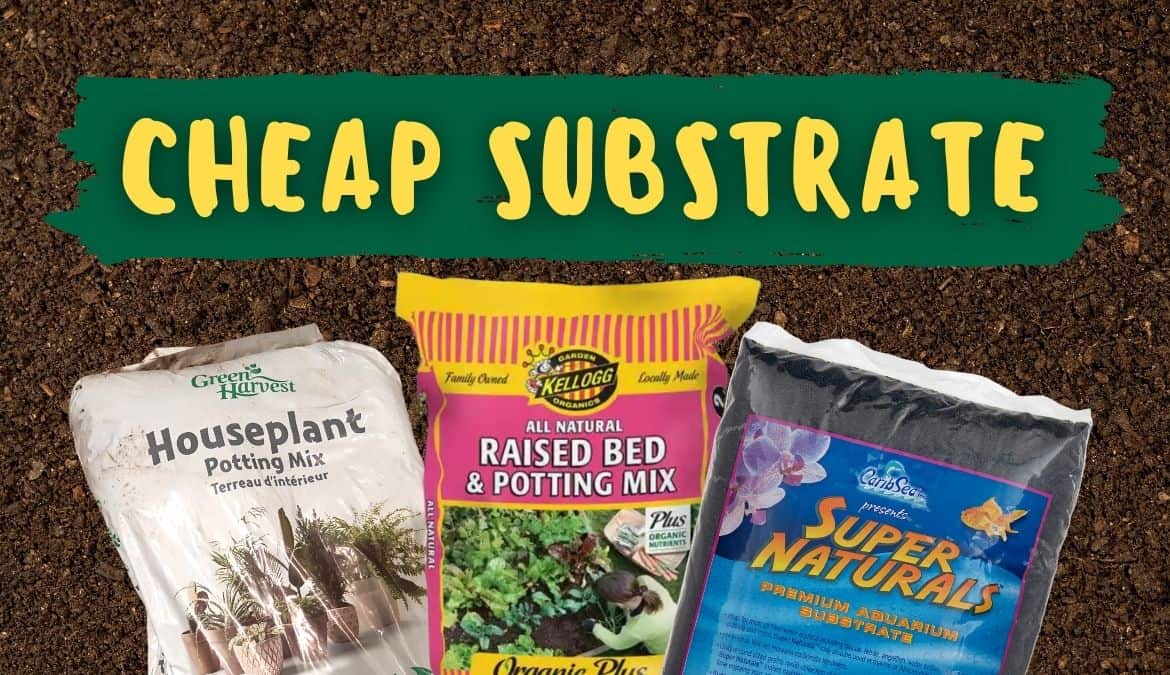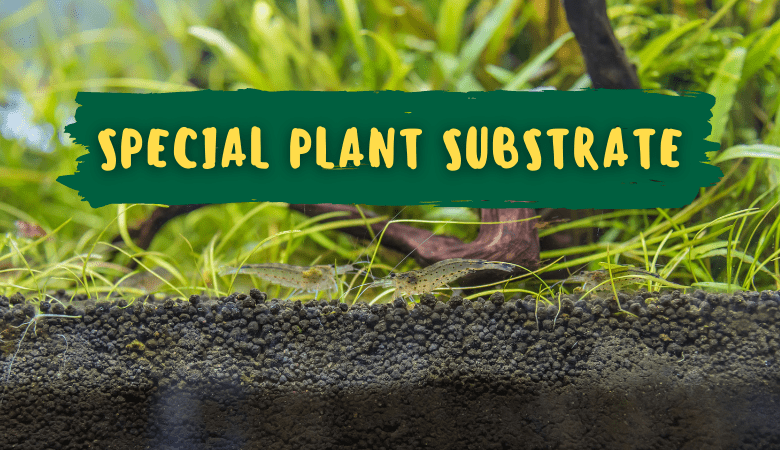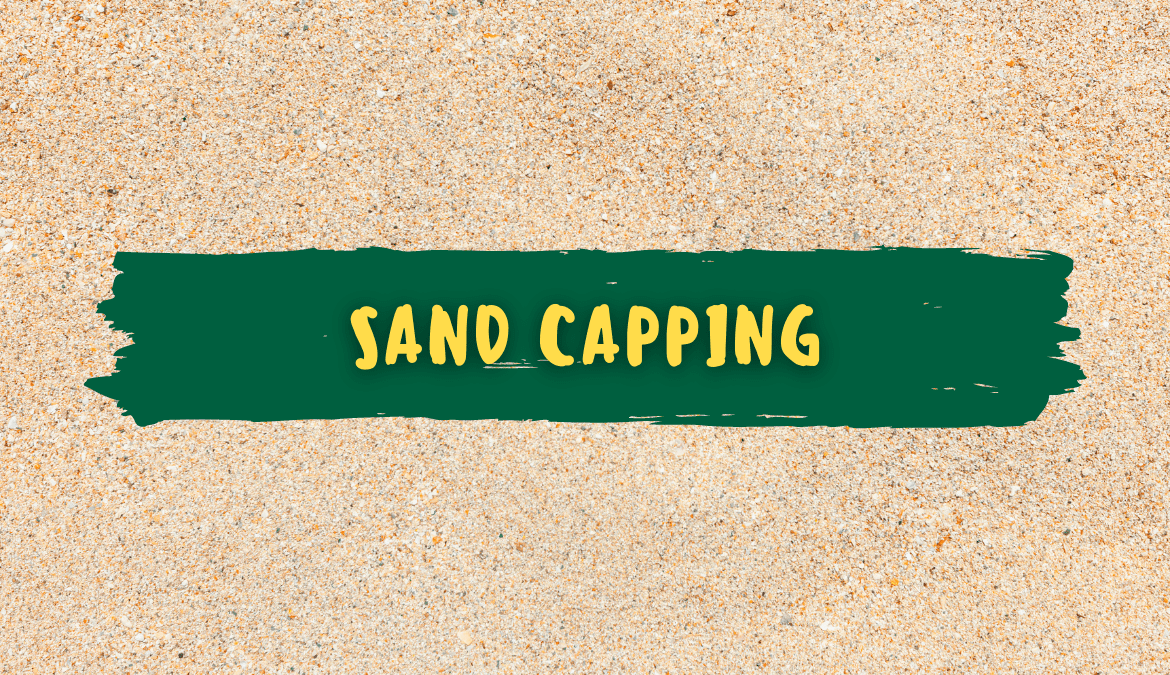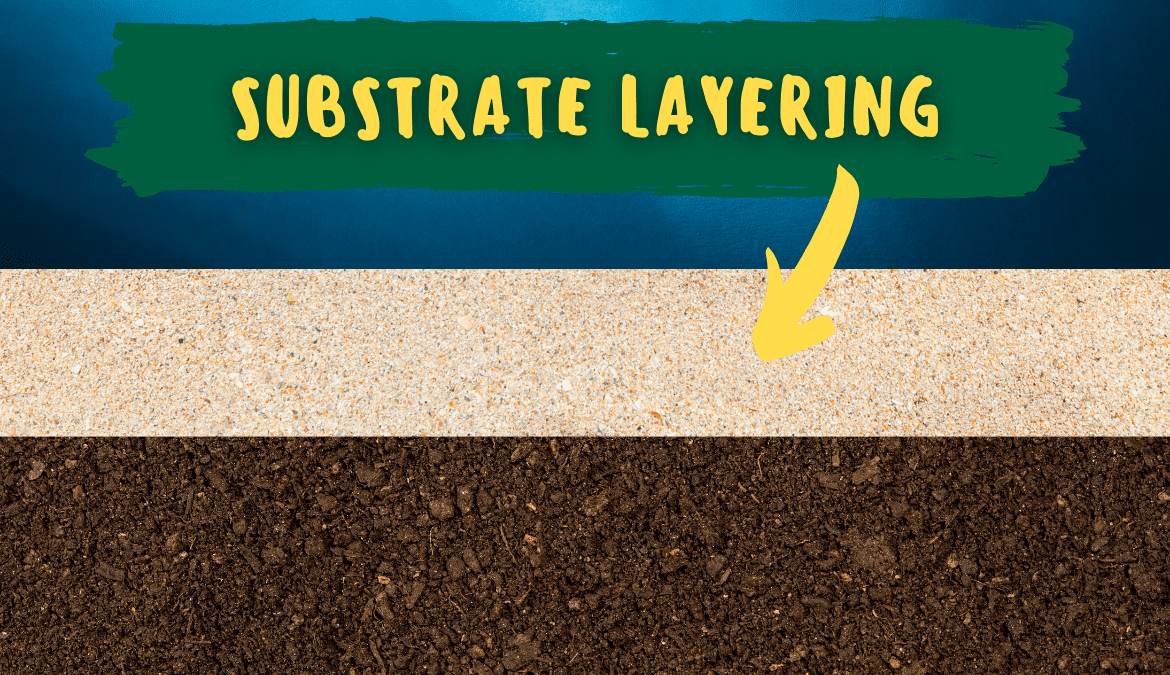Substrates are one of the most important factors for growing and sustaining healthy aquatic plants. The following article will be one of the most comprehensive explorations into the role aquarium substrates play in the fishkeeping hobby, what types are available, and how to choose a substrate that’s best for your tank.
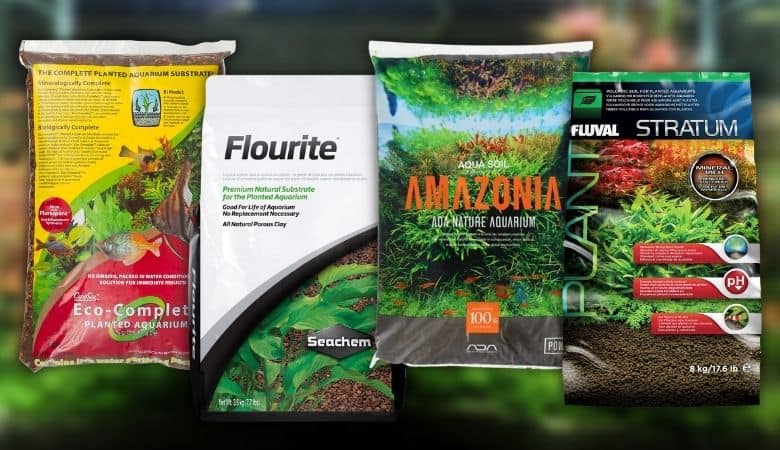
Contents
- 1 What is substrate?
- 2 What is substrate made of?
- 3 Why is substrate important for planted tanks?
- 4 Types of substrates
- 5 How many substrates do I need to use?
- 6 Do substrates change water parameters?
- 7 Important factors to consider when buying substrate
- 8 Do low-tech tanks require different substrate?
- 9 Least expensive substrates
- 10 Best gravel substrates for planted tanks
- 11 Best sand substrates for planted tanks
- 12 Best aqua soil substrates for planted tanks
- 13 Frequently asked substrate questions
What is substrate?
Substrate is the bed of gravel, sand or soil that lays at the bottom of an aquarium. It’s where aquatic plants grow roots and obtain some of their nourishment from.
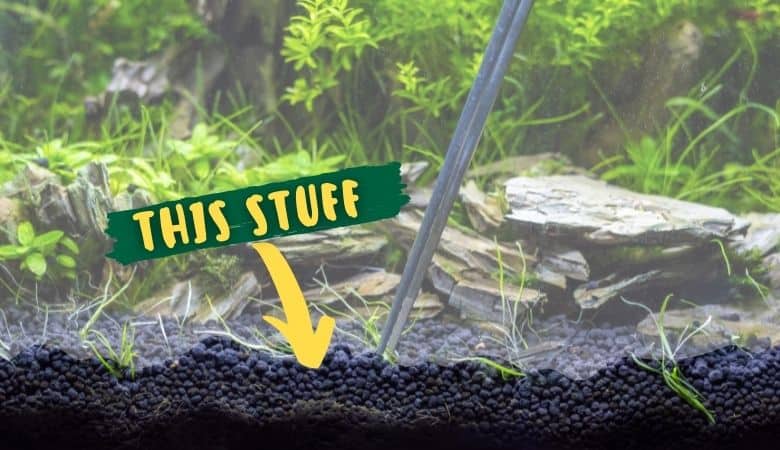
What is substrate made of?
Aquarium substrate can be made of gravel, clay, sand, dirt, crushed shells and other artificial and organic materials. Each material type has advantages and disadvantages for growing plants.
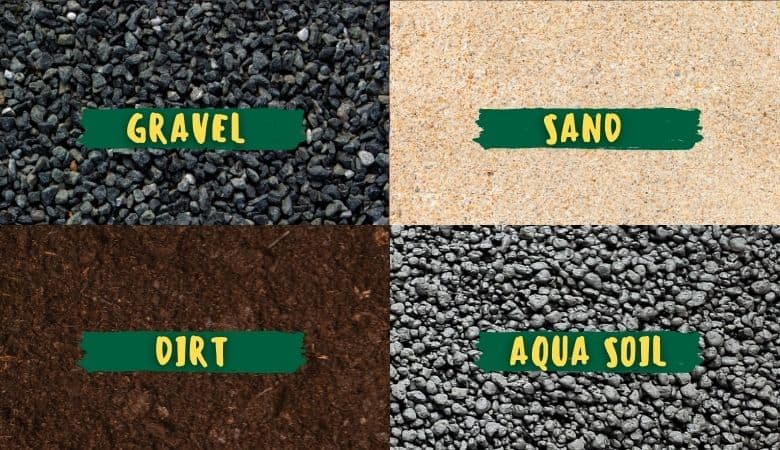
Why is substrate important for planted tanks?
Substrate affects how successfully plants can grow their root systems and absorb nutrients. Some demanding plants may benefit from having nutrient-rich active substrates. Others may benefit from substrates with a large grain size to allow for proper root expansion.
Aquarium substrate also increases the available surface area in a tank for beneficial bacteria to grow. This is important for establishing a nitrogen cycle, especially if you have a large bio-load of livestock.
Types of substrates
Substrates can be placed into two categories: inert and active. These terms refer to whether or not the substrate provides added nutritional value to plants.
Inert substrates
Gravel, clay and sand are considered “inert” substrates because they do not add nutritional value to aquarium plants. Also, they do not affect a tank’s water chemistry, such as its pH and hardness.
The term “inert” is defined as being chemically inactive.
Active substrates
A substrate is considered “active” if it changes a tank’s water chemistry. Specifically, they contain macronutrients such as nitrogen, magnesium, potassium and phosphorus; and micronutrients such as iron, manganese, copper and zinc.
Aqua soils
Aqua soils are a type of active aquarium substrate. They are designed specifically for promoting aquatic plant growth. This is achieved by reducing water hardness and pH or by leaching macro and micronutrients that plants consume.
Crushed coral and aragonite
Crushed coral and aragonite are another type of active substrate that release minerals into the water. These substrates are designed to increase KH, GH and pH. These substrates are usually not used in a planted aquarium unless you live in a region that has naturally soft pH and hardness.
Base layer substrates
Base layer substrates have larger grain sizes and increased porosity to allow for increased substrate water flow and oxygenation. They can also contain bacterial culture starters, which promote the grow of aerobic bacteria used in the nitrogen cycle.
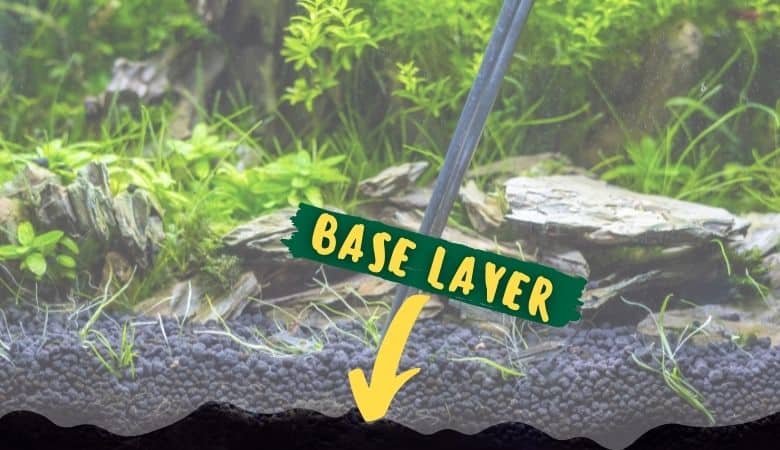
They are usually added at the bottom of the tank beneath a layer of another substrate, usually an aqua soil.
The increased water flow and oxygen is possible because base layer substrates are much less compact than sand. This reduces the chances of anaerobic bacteria, which is unwanted bacteria that converts nitrate into nitrite (instead of the other way around).
Other benefits include increased the lifespan of your substrate in aquariums that you want to last for multiple years at a time, and as a tool for aquascapers to create slopes and increase substrate height.
Base layer substrates are a good practice, but not common for most aquarium keepers to use. They are recommended but not required.
Dirt substrate
Aquarists can also use organic potting soil or mineralized top soil as nutrient-rich substrates. This method is recommended for advanced fishkeepers due some of the risks.
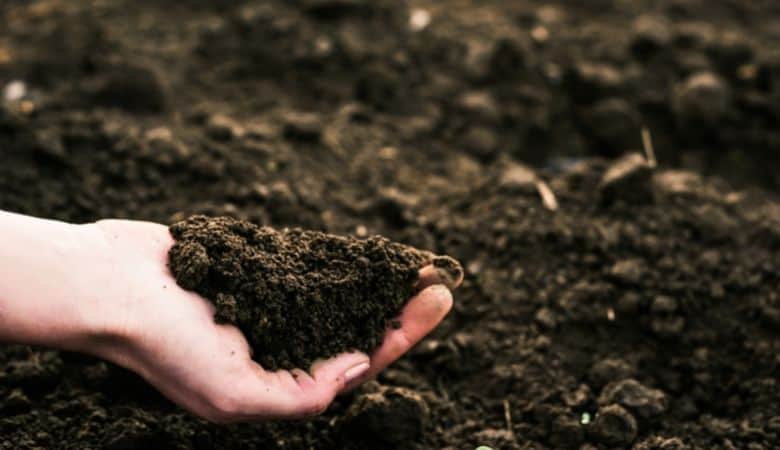
Dirt is usually added as a base layer and capped with and equal thickness of sand or gravel. This cap needs to be compact enough to prevent the dirt layer from seeping into the water column, but coarse enough to allow for root growth.
Therefore, a coarse sand or fine gravel top layer is recommended.
Dirt has a very high level of nutrition, will promote explosive root growth, and is relatively inexpensive compared to aqua soils.
The downside is that it’s incredibly messy and will cause very cloudy water if it’s disturbed in even a minor way. Also, it’s high nutrition value can cause algae blooms if it’s not properly balanced with appropriate lighting and CO2.
It’s messiness also makes it difficult to replenish with root tabs.
How many substrates do I need to use?
Layering or mixing an aqua soil with another active substrate will help plants achieve optimal growth. But it is also possible to achieve successful plant growth using single inert substrates if you supplement root tab fertilization.
Individual inert substrates
Inert substrates can be used on their own to successfully grow plants. However, their lack of porosity makes it difficult for plant roots to “grab a hold” of the substrate grains and grow robust root systems.
Also, they do not add macro or micronutrients into the water. This doesn’t hurt plants, but it doesn’t benefit them either.
Lastly, inert substrates are unable to “hold” nutrients from the water column and feed them to plant roots. This is because they have no CEC value.
If you choose to use just an individual inert substrate for your planted aquarium, it’s necessary to add root tabs every 3-5 weeks and dose liquid all-in-one fertilizer to ensure your plants get the nutrition they need.
Individual aqua soils
Active aqua soil substrates can work well on their own because they have porosity, high CEC, contain macro and micronutrients, and soften aquarium water. These properties create an optimal environment for plant growth.
One drawback is that aqua soils are more expensive than inert substrates and other active substrates such as Seachem Flourite and CaribSea Eco-Complete.
Mixed active substrates
Mixing active aqua soils with active non-aqua soils, such as Seachem Flourite or CaribSea Eco-Complete, is an effective and easy method for increasing your substrate’s volume in an inexpensive way.
This method involves simply mixing the two substrates together before adding them to your aquarium.
Although they are technically considered active substrates, Flourite and Eco-Complete do not drastically affect the pH or hardness of aquarium water. Nor do they contain large amounts of macro and micronutrients.
Layered active substrates
An effective, and nice-looking, method is to layer two or more active substrates on top of one another. For example, you may choose to add a 1-inch layer of aqua soil on the bottom, followed by a 1-inch layer of an active non-aqua soil like Eco-Complete, followed by a 1-inch layer of aqua soil on top.
This method is similar to the “mixed” method above, but may allow for greater water flow and oxygenation in the middle layer. Also, the nutrient-rich base layer may benefit heavy root feeders such as cryptocorynes and Amazon swords.
Do substrates change water parameters?
Some active soil substrates are designed to reduce an aquarium’s pH with peat moss. Certain substrates may also leach ammonia into the tank, which is an important macronutrient for plant growth, but is harmful to livestock if there is no bacteria that detoxifies it.
| Substrate | Lowers pH | Leaches ammonia | Contains other nutrients |
| Sand | No | No | No |
| Gravel | No | No | No |
| Seachem Flourite | No | No | No |
| CaribSea Eco-Complete | No | No | Yes |
| ADA Amazonia | Yes | Yes | Yes |
| Fluval Stratum | Yes | Yes | Yes |
| Tropica Aquarium Soil | Yes | Yes | Yes |
| Mr. Aqua Aquarium Soil | Yes | Yes | Yes |
The reason some substrates reduce pH is because most aquatic plants thrive in slightly acidic water. Somewhere between 6.0-7.5 pH is ideal for most plants.
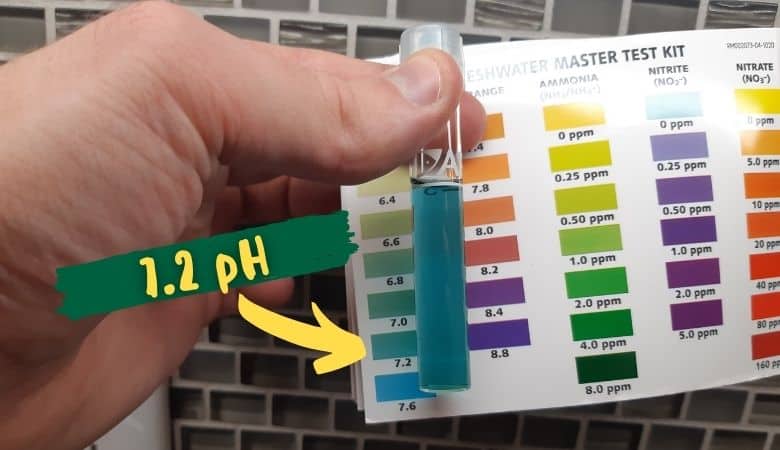
This is because all important macro and micronutrients are water soluble in this range. When pH gets to around 8.0 or higher, some nutrients are unable to dissolve in water, which means they can be absorbed by plants.
Substrates that contain peat
The following substrates contain peat. This is what allows them to soften water by reducing KH and pH.
- ADA Amazonia
- Fluval Stratum
- Tropica Aquarium Soil
- Mr. Aqua Aquarium
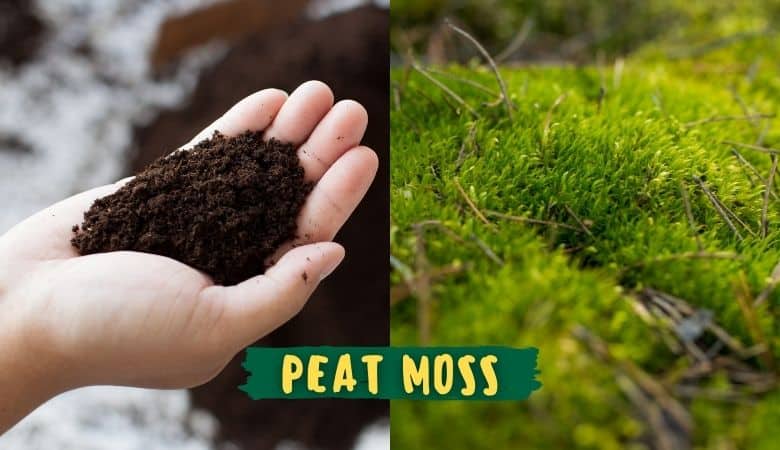
Substrates that contain carbonate minerals
The following substrates are designed to increased pH, GH and KH. They are not recommended for planted aquarium unless you have naturally soft water. They are great for keeping certain tropical fish species such as livebearers and African cichlids.
- CaribSea Aragonite
- CaribSea Crushed Coral
Substrates that contain macro and micronutrients
The following substrates contain macro and micronutrients:
- ADA Amazonia
- Fluval Stratum
- Tropica Aquarium Soil
- Mr. Aqua Aquarium
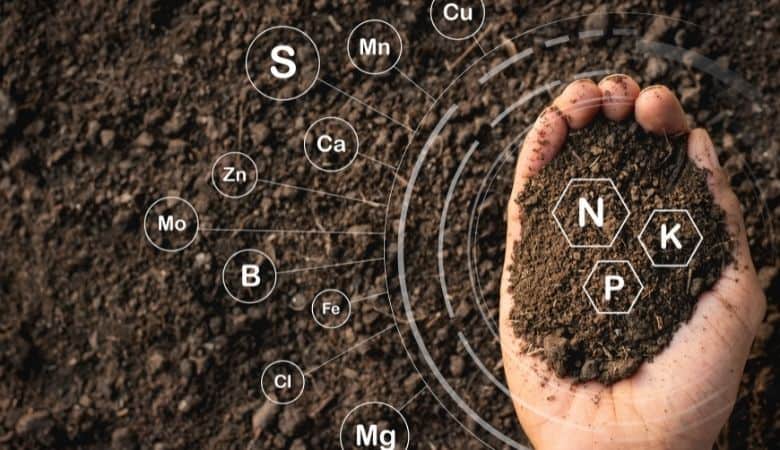
The following substrates contain micronutrients but no macronutrients:
- Seachem Flourite
- CaribSea Eco-Complete
Important factors to consider when buying substrate
Your water parameters
Your default water parameters are going to largely determine what species of plants and tropical fish you will be able to keep.
Generally speaking, plants thrive in pH between 6.0-7.5. It’s the range where all macro and micronutrients are soluble in water.
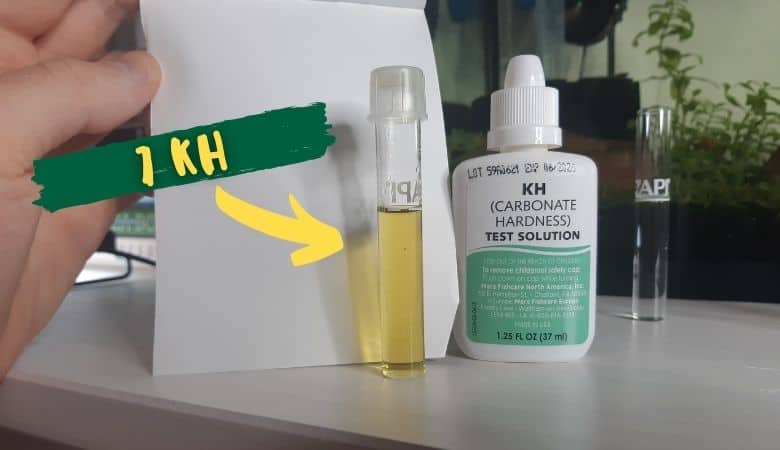
If you’re like me and live in a region with high pH and KH, it may be beneficial for you to choose an aqua soil substrate that has water softening properties.
What plants you wish to grow
Some plants require higher concentrations of light, CO2 and nutrients to grow successfully. If you’re hoping to keep specific plant species, make sure your tank is setup to accommodate them.
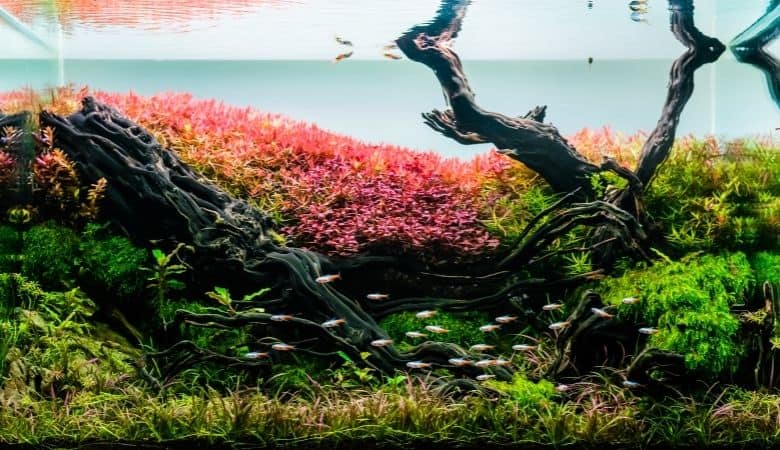
This may include using choosing nutrient-rich substrates such as ADA Amazonia or Fluval Stratum.
It may also be beneficial to use nutrient-rich aqua soils for heavy root-feeding plants such as cryptocorynes and sword plants.
Substrate weight
Substrate weight may be important to consider if you are using multiple layers of substrate on top of one another. Light-weight substrates, such as Fluval Stratum, may become crushed underneath a thick layer of heavy sand or gravel substrate.
Light-weight substrates are also more difficult to anchor plants in. When you try and plants them they will become dislodged and float to the top of your tank.
Substrate grain size
Grain size affects how compact a substrate will settle under its own weight. Small–grained substrates, such as sand, will make it difficult for plants to establish healthy root systems.
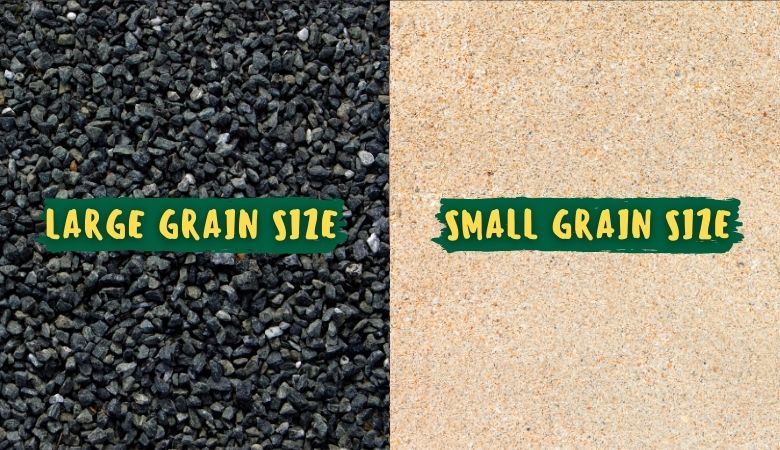
They may also limit water flow and oxygenation, which may promote the growth of anaerobic bacteria. However, a smaller grain size will increase surface area for beneficial bacteria to grow.
Substrate nutrient contents
Most active substrates will contain some macro and micronutrients. These are absorbed by plants to grow roots, improve metabolism, grow tissue and achieve other developmental functions.
Certain substrates, such as ADA Amazonia, leach large amounts of ammonia into the water column. This is beneficial in the long-term for plant growth, but is harmful in a new tanks that does not have an established biological filter.
In fact, some aquarists suggest that their tank has taken up to two months to establish with Amazonia.
Other substrates, such as CaribSea Eco-Complete, contain useful micronutrients but only a small amount of ammonia. This means they would require less time to establish before being safe to add fish.
Inert substrates pose less risk because they do not affect the water chemistry at all.
Substrate CEC value
Cation Exchange Capacity, or CEC, measures the amount of nutrients a substrate can absorb. These nutrients are stored and made available for plants at their roots.
Inert substrates have no CEC value. Most active substrates contain some amount of CEC. Generally, a higher CEC is better.
| Substrate | CEC value (approximate) |
| Sand | 0 |
| Gravel | 0 |
| Seachem Flourite | 2 |
| CaribSea Eco-Complete | 7 |
| ADA Amazonia | 26 |
| Tropica Aquarium Soil | 28 |
| Fluval Stratum | Unknown |
| Mr. Aqua Aquarium Soil | Unknown |
How the substrate looks
It’s important to choose a substrate that you like looking at! At the end of the day, fishkeeping and planted aquariums are meant to be enjoyable.
Many people prefer to look of a black substrate due to the contrast it provides against bright green plants. Others prefer white sand, red clay or any variety of colorful gravels.
If you’re growing a planted tank, I recommend first learning how to provide your plants with the nutrition they need. Once you accomplish that, play with different substrate “caps” or top layers that suit your style.
Substrate grain hardness
Sand, gravel and most clay-based substrates are quite hard and will last for many years. You can also put these substrates in your tank before adding hardscape without any issues.
With softer substrates, such as Fluval Stratum and ADA Amazonia, heavy gravel vacuuming and other disturbances will cause them to disintegrate. It’s recommended to add these soft substrates after positioning your hardscape features.
Substrate sharpness
Some gravels, sands and clay-based substrates can have sharp edges. It’s important to be aware of this if you are keeping bottom dwelling fish like corydoras, plecos or catfish who may cut themselves on the jagged edges.
Substrate porosity
Porosity is a measure how much much empty space is within a grain of substrate. In other words, how many holes are in each grain.
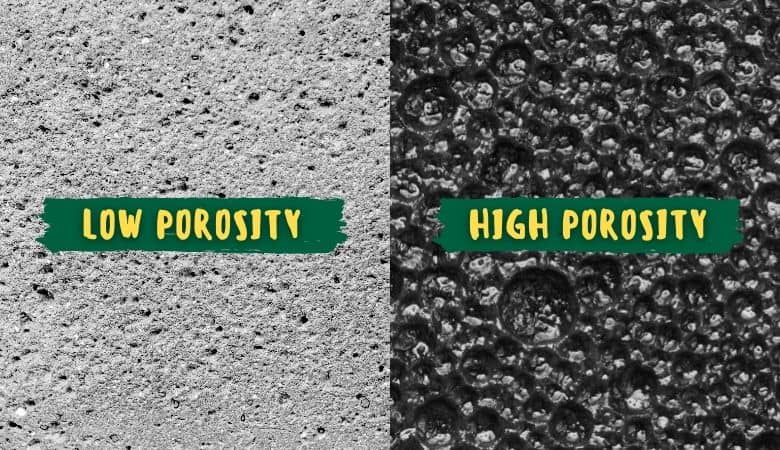
A higher porosity means the substrate has a larger surface area for beneficial bacteria to grow. Porosity is also allows plant roots to grab a hold more easily, making the root growth easier.
Substrate buffering capacity
Substrate with a high buffering capacity consume carbonate minerals and reduce the concentration of hydrogen ions (H+). This lowers the pH of the aquarium water, which is generally better for plant growth.
Many active aqua soils are designed with buffering capabilities. This includes ADA Amazonia, Fluval Stratum, Tropica Aquarium Soil and Mr. Aqua Aquarium Soil.
Do low-tech tanks require different substrate?
It’s not absolutely necessary for low-tech planted aquariums to use different substrate. However, nutrient-rich substrates like ADA Amazonia leach a substantial amount of ammonia into the water, which is difficult to balance in low-light setups.
Least expensive substrates
Inert gravel and sand will usually be a less expensive substrate than aqua soil.
| Substrate brand | Price (USD) | Price per kg |
| CaribSea Super Naturals Sand (9.072kg) | $14.99 | $1.65 |
| Pisces Midnight Pearl Gravel (4.99kg) | $18.91 | $3.79 |
| Stoney River Premium Aquarium Sand (2.27kg) | $13.41 | $5.91 |
Best gravel substrates for planted tanks
Seachem Flourite and CaribSea Eco-Complete are not exactly gravel substrates. But I would classify them in this category because they are insert substrates with a fairly large grain size.
It should be noted that despite Flourite’s lower price point, it contains a smaller volume compared to most comparable substrates.
| Substrate | Price (USD) | Grain size |
| Seachem Flourite Black (3.5kg) | $19.99 | 0.5-2mm |
| CaribSea Eco-Complete (9.072kg) | $29.99 | 1-7mm |
| Spectrastone Shallow Creek Regular Gravel (2.27kg) | $22.11 | 2-4mm |
| Pisces Midnight Pearl Gravel (4.99kg) | $18.91 | 2-4mm |
| Pure Water Pebbles Aquarium Gravel (2.27kg) | $18.10 | 3-6mm |
Seachem Flourite
Seachem Flourite is a nice-looking substrate that is great for low-tech planted tanks. I used 2-inches of this substrate on its own in my first planted tank.
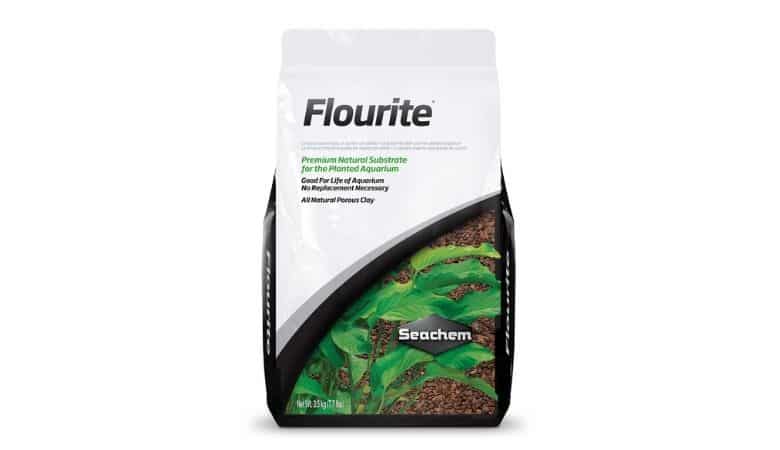
It comes in red, brown and black colors so you can pick one that suits your tank aesthetic. Dark substrate is common in aquascapes because of how well green plants contrast against them.
If you’re using Flourite for a planted tank, make sure you don’t accidentally choose the sand version. It contains the word “sand” in the product name. For example, there is both a “Seachem Flourite Black” and “Seachem Flourite Black Sand.”
Benefits:
- Durable
- Never has to be replaced
- Comes in a variety of colors
- Doesn’t affect water parameters
- Fairly easy to plant in
Drawbacks:
- Requires a LOT of rinsing
- Not a large volume per bag
- Sharp edges
- Requires root tabs for planted tanks
CaribSea Eco-Complete
Eco-Complete is another excellent substrate that’s useful in both low-tech and high-tech aquariums. It’s a great middle road between something like Seachem Flourite and ADA Amazonia.
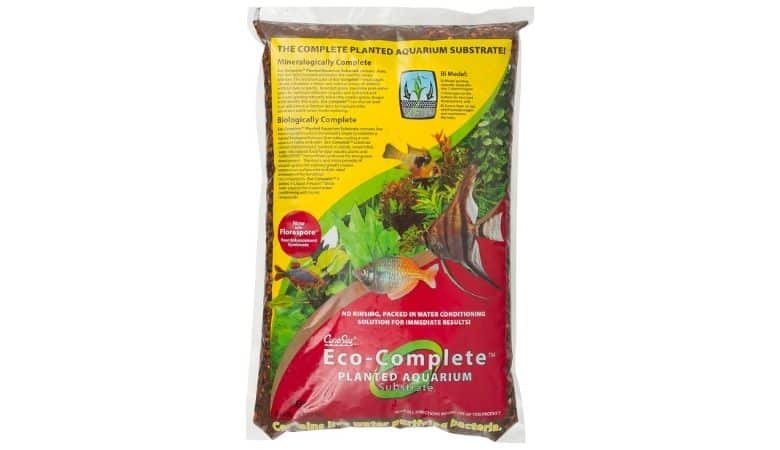
Eco-Complete contains some macronutrients, such as calcium, magnesium and potassium. And it also contains many micronutrients as well, which help with plant growth.
It doesn’t contain much nitrogen, which means there is minimal, if any ammonia leach into the water column. This means your aquarium can become established more quickly.
It will also reduce your aquarium’s pH.
Benefits:
- Doesn’t require rinsing
- Contains bacteria starter
- Contains iron, calcium, magnesium, potassium and other plant micronutrients
- Doesn’t leach ammonia
- Doesn’t affect pH
- Has a high EC for storing nutrients
Drawbacks:
- Sharp edges
- Requires root tabs for planted tanks
Best sand substrates for planted tanks
There are many other sands not on this list that are perfectly suitable for your aquarium. Just make sure you find one that is non-toxic and aquarium safe.
| Substrate | Price (USD) | Grain size |
| Seachem Flourite Black Sand (3.5kg) | $23.50 | <1mm |
| CaribSea Super Naturals Sand (9.072kg) | $14.99 | <1mm |
| Stoney River Premium Aquarium Sand (2.27kg) | $13.41 | <1mm |
Best aqua soil substrates for planted tanks
The following list ranks my suggested aqua soil substrates based on their ability to successfully grow live plants. Although Amazonia ranks first, I don’t recommend it for most low-tech planted aquariums due to it’s extremely high nutritional content that must be balanced with a higher-tech system.
| Substrate | Price | CEC value | Changes pH | Nutrient rich |
| ADA Amazonia (9kg) | $64.99 | 26 | Yes | Yes |
| Fluval Stratum (8kg) | $39.99 | Unknown | Yes | Yes |
| Tropica Aquarium Soil (9kg) | $54.99 | 28 | Yes | Yes |
ADA Amazonia
ADA Amazonia is widely consider as being the best aqua soil for the most demanding planted tanks. It contains a substantial amount of macronutrients and micronutrients, which it great for plant growth.
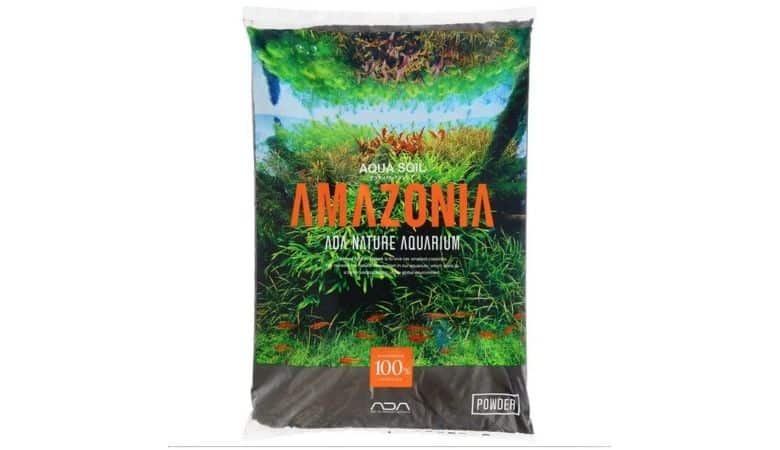
However, this means a lot of ammonia will leach into your aquarium over the first few weeks and beyond. As a result, it’s best to wait for several weeks or even a couple of months until a biological filter has been established.
Benefits:
- Contains macro and micronutrients for plant growth
- Softens water for improved plant growth
- Has a high CEC for storing nutrients
Drawbacks:
- Leaches a substantial amount of ammonia
- Lowers pH and carbonate hardness
- Expensive
Fluval Stratum
Fluval Stratum is a great, nutrient-rich substrate that can be used in both low-tech and high-tech tanks. It contains all macronutrients and many important micronutrients. This means it leaches ammonia into the water column so you’ll need to make sure you establish a biological filter before adding fish.
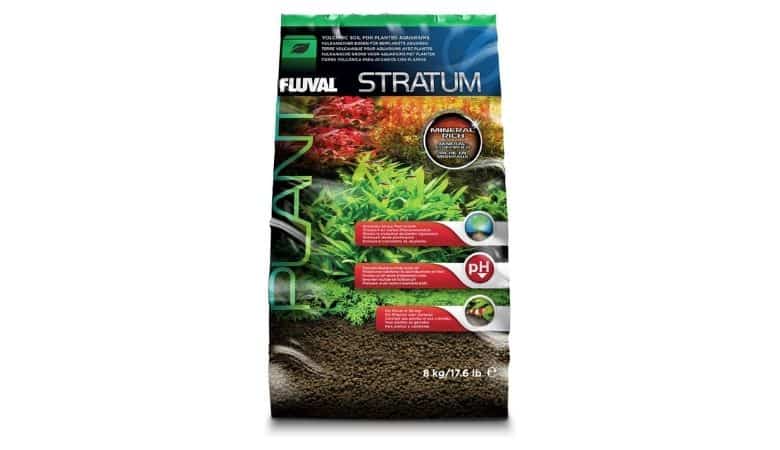
It also contains peat, which reduces pH and water hardness. Stratum contains fewer macronutrients than Amazonia, which means you can establish a tank more quickly.
Benefits:
- Contains macro and micronutrients for plant growth
- Softens water for improved plant growth
- Has high CEC for storing nutrients
Drawbacks:
- Leaches some ammonia
- Lowers pH and carbonate hardness
- Expensive
- Difficult to anchor plants due to light weight
Frequently asked substrate questions
Can you change substrate with fish in your tank?
It’s possible to safely replace your aquarium’s substrate without harming your fish. This is accomplished by using an inert substrate to prevent changes to your water’s pH, hardness or ammonia leaching.
I recently replaced gravel with Seachem Flourite without losing any fish. In fact, I immediately saw an improvement in fish behavior after adding this inert, clay-based substrate.
Active substrates often leach ammonia to promote plant growth. This can be incredibly dangerous for your fish due to possible ammonia burns and increased stress.
Other active substrates contain peat moss to reduce hardness and pH. Again, this is intended to create a more suitable environment for live plants. However, these changes in water chemistry will cause stress and open the door to fish disease.
To perform a substrate change safely, start by removing your fish and putting them in another tank or temporary container. Then remove about half of the tank’s water to make it easier to perform the change.
You can then scoop out the old substrate and slowly pour the new substrate in its place.
It’s best if you have a sponge filter, hardscape or other decorations that will contain beneficial bacteria from the previous setup. This will help you maintain your biological filter that has undoubtedly grown within your old substrate.
Do plants grow better in sand or gravel?
Plants grow better in gravel because it’s less compact and plants are able to grow a strong root system more easily. However, you will likely be able to grow plants in sand substrate if you provide root tabs and adequate liquid fertilization.
Alternatively, you could use gravel as a base layer with sand on top. This would allow roots to grow more successfully beneath the layer of sand.
Can I mix gravel and soil substrate?
Mixing gravel and soil can be a good method for reducing overall substrate costs. Otherwise, there isn’t a tremendous benefit in doing so.
A better option might be to use gravel as a base layer substrate with a soil top layer. This is more useful because the gravel allows for greater substrate water flow and oxygenation.
This prevents the growth of anaerobic bacteria, which is something aquarists try to avoid.
Do you need to rinse substrates before using?
It’s recommended to rinse sand, gravel and Seachem Flourite substrates to prevent cloudiness. These substrates often create dust during transport, which results in unpleasant-looking couldy water.
However, it’s not recommended to rinse active substrates that contain macro and micronutrients because you will rinse away the beneficial nutrients that benefit plant growth.
Also, many active substrates are much softer and will crumble upon rinsing.
Can I add more substrate to an established tank?
It’s perfectly fine to add inert substrates to established tanks. I recommend using caution when adding active substrates because some of them leach ammonia, while others affect pH and hardness.
This will affects the chemistry of your water, which will cause stress in your fish.
How long do substrates last?
Inert substrates will last for 5 or more years as long as they in well-maintained aquariums. Active substrates, such as Seachem Flourite and Eco-Complete will last for many years as well. They’re both quite hard and will not degrade easily.
Most of the other common active substrates will start losing their nutrient-adding properties after about 1-2 years. However, their high CEC will allow them to remain useful with root tabs and liquid fertilization.
They are softer though, so excessive substrate vacuuming and plant adjustments may cause them to break down with frequent use.
How deep should aquarium substrate be?
A substrate depth of 2-inches is sufficient for most plants to grow healthy root systems. This can be done with a single substrate or by layering several substrates. There is no upper-limit to substrate depth. However, deep aquarium substrate increases the chance of growing anaerobic bacteria.
A 3-inch depth will make it a little easier for plants to grow and will also provide them with more nutrients if you choose to use aqua soils.
Can you grow aquarium plants without substrate?
Java ferns, anubias, water wisteria and floating plant species can grow without being planted in substrate. These plants obtain most of their macro and micronutrient via the water column instead of their root system.
Do you need root tabs if you have active substrate?
It’s not necessary to use root tabs if you are using nutrient-rich substrates such as ADA Amazonia or Fluval Stratum. It helps if you use aquarium substrates with a high CEC so they can absorb and store nutrients from the water column. However, these substrates deplete after 1-2 years.
After which you will likely need to consider using root tabs to achieve the same level of nutrient uptake.
Will certain substrates cause algae blooms?
Substrates that leach ammonia and other nutrients will often cause algae blooms in new aquariums. This is due to unestablished biological filters or immature plants that don’t consume enough of the nutrients yet. Also, sand substrates that contain silicates are believed to cause algae blooms.


